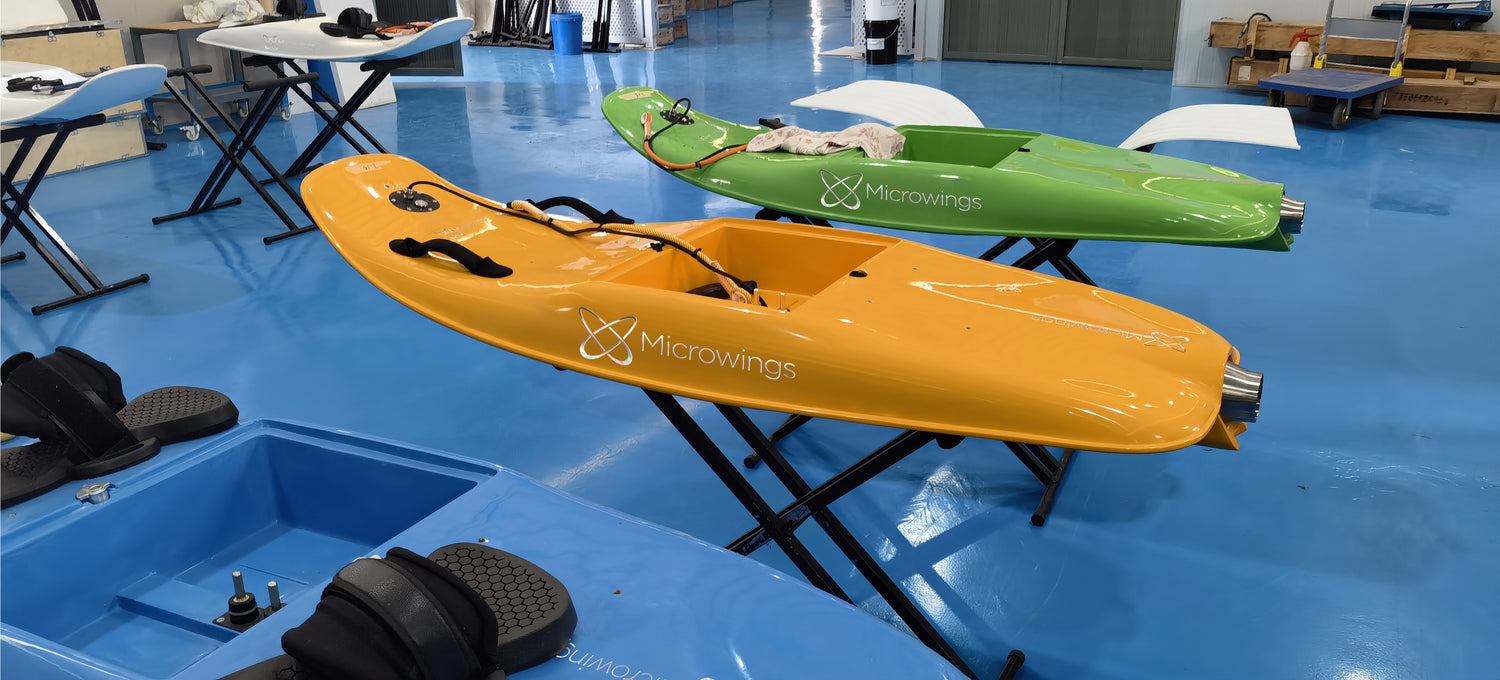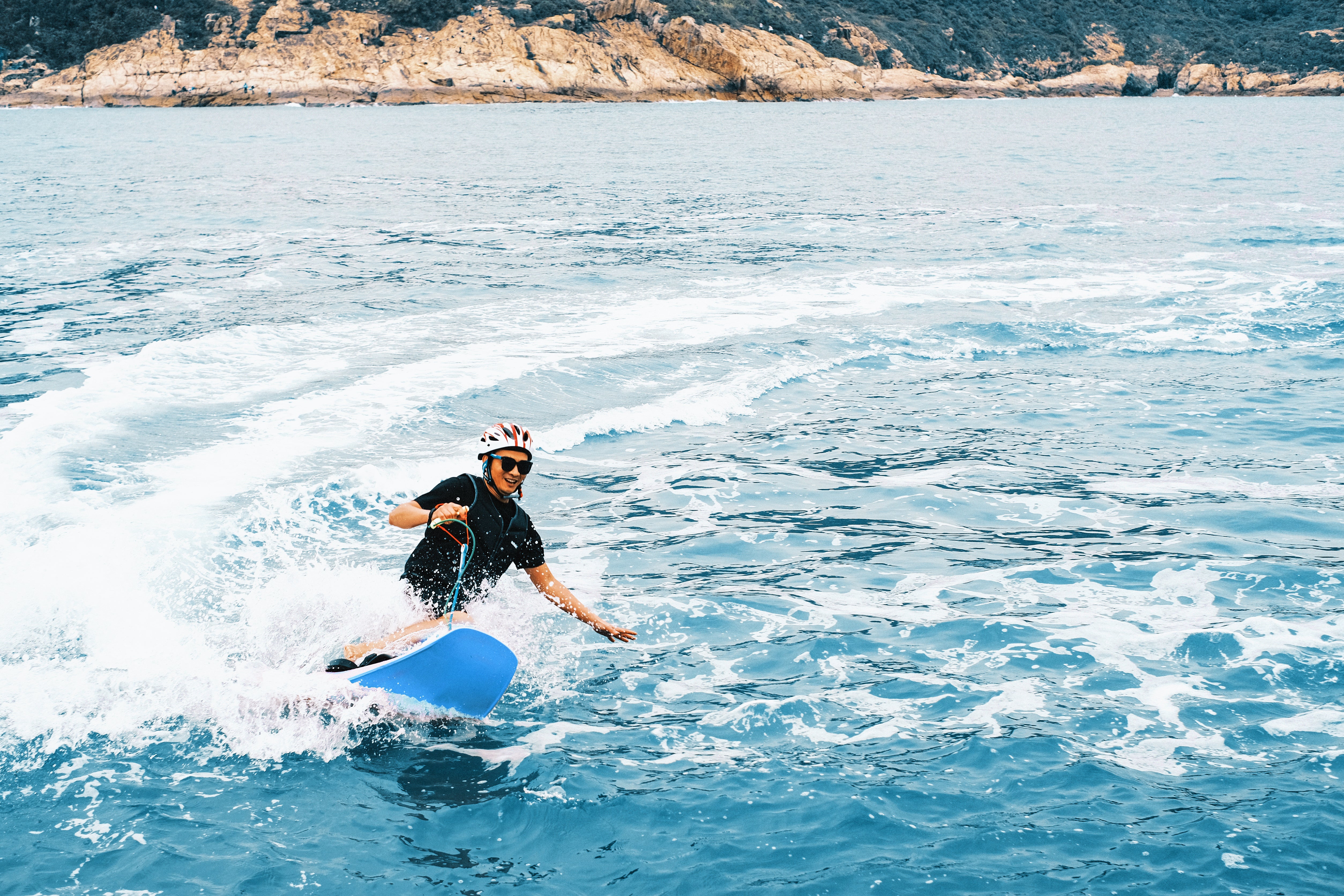One of the most important things in learning surfing is to choose a surfboard that suits you, so that you can master the surfing skills correctly.
① Your weight (for beginners):
● 60KG: 7.2-8.0 feet
● 70KG: 7.8-8.6 feet
● 80KG: 8.2-9.2 feet
● 90KG: 8.6-10.0 feet
The heavier you are, the bigger the board should be. The larger the bottom surface, the more the waves can push it. The heavier the weight, the greater the buoyancy. The greater the buoyancy, the easier it is to ride. Therefore, a board thicker than 3.5 inches is required.
② The waves you often surf:
If there are medium and large waves, the board should be reduced, and if there are small waves, the board should be enlarged. However, it still depends on what board you want to surf. Different boards have different ways of playing, so it is difficult to say which board is right.
③ Your physical skills:
The better your physical skills, the smaller the board you can buy to increase the control performance, but longboards also have longboard play. The shorter the board, the less buoyancy, the more effort it takes to slide and the harder it is to get on.
According to surfing experts, technical experience is the most important. If you want to surf easily and catch the waves easily, you need to increase the board. If you want to train your physical strength, you need a shorter board, which is also easier to do moves.
However, it is quite tiring to use a small board for a long time. Many people who surf for a while change to a long board of more than 8 feet because it is too tiring to use a short board of less than 7 feet 2. Most people have jobs and only play on Saturdays and Sundays, so they don’t need to play so hard. Therefore, when choosing a board, you must also consider your various conditions, especially physical strength, and the way you want to play.
④ The control performance of the board:
It is the curvature, board shape, thickness of the board edge. The smaller the curvature, the faster it runs, but it is easy to plunge into the water and capsize in big waves. The larger the curvature, the less likely it is to plunge into the water, but the resistance of small waves is too large. Large manufacturers often make boards with small curvatures in pursuit of high speed. Novices must look for a tilted head when buying a board, otherwise it will plunge into the water. The larger the rudder, the more stable it is, but it is difficult to turn and cannot perform actions. The smaller the rudder, the more unstable it is and the better it is to turn. The weight and size of the board are somewhat related. The lighter, the easier it is to perform actions, and the heavier, the higher the stability.
⑤ Board material:
There are many people who are not familiar with materials selling boards on the Internet. If you see someone say that fiberglass boards are less resistant to collisions and EPOXY (epoxy resin) is more resistant to collisions, they are just laymen. EPOXY is a resin immersed in glass fiber to have strength (probably no one will say this after I publish this). Because 90% of the boards except plastic boards are fiberglass boards, and there are about 3 main types of resins. The softer and more flexible EPOXY is a kind of board that is less likely to crack (but it is also the most likely to break the board). Unsaturated polyester resin is a very hard resin. Acid and alkali resistant resin is more resilient. The main reason for the board to be resistant to collisions is to increase the content of glass fiber to make it strong and tensile. You only need to ask about the fiberglass resin ratio to know its degree of resistance to collisions.
⑥ Safety considerations:
Really measure your own physical strength, don't do things beyond your physical strength, and don't go ashore to rest until you are exhausted. You should maintain 30% of your physical strength. If it is less than 30%, go ashore to rest to avoid unexpected situations and have the physical strength to deal with them. If the waves are too big and you want to go into the water, it is recommended to find something buoyant to tie to your body. It is best to wear a life jacket and have a rescuer ready. When you are caught in a big wave, you should protect your head and face with your hands to avoid being hit by the board. The foot rope should be replaced regularly, and there should be a rope break preparation. Keep a distance from other surfboards, especially when the waves are big. The medium and large rudders are easy to hurt people. It is best to change to a soft one, or try to round it. Don't be nervous when the foot rope is wrapped around your feet. Pull the board back to float first, and then deal with it. When the rope breaks, it depends on your physical strength and swimming skills, or have someone to help. It is best to change the rope every year. The more preparation, the more safety. Safety means surfing for a long time. And don't surf in places with too many people. There are often collisions. You must have a habit of protecting your face with both hands when you are caught in the waves or someone hits you, especially your eyes. Every surfer has the possibility of being injured by the tail rudder. In order to avoid hurting others or yourself, the tail rudder must be processed and rounded by yourself!
① Your weight (for beginners):
● 60KG: 7.2-8.0 feet
● 70KG: 7.8-8.6 feet
● 80KG: 8.2-9.2 feet
● 90KG: 8.6-10.0 feet
The heavier you are, the bigger the board should be. The larger the bottom surface, the more the waves can push it. The heavier the weight, the greater the buoyancy. The greater the buoyancy, the easier it is to ride. Therefore, a board thicker than 3.5 inches is required.
② The waves you often surf:
If there are medium and large waves, the board should be reduced, and if there are small waves, the board should be enlarged. However, it still depends on what board you want to surf. Different boards have different ways of playing, so it is difficult to say which board is right.
③ Your physical skills:
The better your physical skills, the smaller the board you can buy to increase the control performance, but longboards also have longboard play. The shorter the board, the less buoyancy, the more effort it takes to slide and the harder it is to get on.
According to surfing experts, technical experience is the most important. If you want to surf easily and catch the waves easily, you need to increase the board. If you want to train your physical strength, you need a shorter board, which is also easier to do moves.
However, it is quite tiring to use a small board for a long time. Many people who surf for a while change to a long board of more than 8 feet because it is too tiring to use a short board of less than 7 feet 2. Most people have jobs and only play on Saturdays and Sundays, so they don’t need to play so hard. Therefore, when choosing a board, you must also consider your various conditions, especially physical strength, and the way you want to play.
④ The control performance of the board:
It is the curvature, board shape, thickness of the board edge. The smaller the curvature, the faster it runs, but it is easy to plunge into the water and capsize in big waves. The larger the curvature, the less likely it is to plunge into the water, but the resistance of small waves is too large. Large manufacturers often make boards with small curvatures in pursuit of high speed. Novices must look for a tilted head when buying a board, otherwise it will plunge into the water. The larger the rudder, the more stable it is, but it is difficult to turn and cannot perform actions. The smaller the rudder, the more unstable it is and the better it is to turn. The weight and size of the board are somewhat related. The lighter, the easier it is to perform actions, and the heavier, the higher the stability.
⑤ Board material:
There are many people who are not familiar with materials selling boards on the Internet. If you see someone say that fiberglass boards are less resistant to collisions and EPOXY (epoxy resin) is more resistant to collisions, they are just laymen. EPOXY is a resin immersed in glass fiber to have strength (probably no one will say this after I publish this). Because 90% of the boards except plastic boards are fiberglass boards, and there are about 3 main types of resins. The softer and more flexible EPOXY is a kind of board that is less likely to crack (but it is also the most likely to break the board). Unsaturated polyester resin is a very hard resin. Acid and alkali resistant resin is more resilient. The main reason for the board to be resistant to collisions is to increase the content of glass fiber to make it strong and tensile. You only need to ask about the fiberglass resin ratio to know its degree of resistance to collisions.
⑥ Safety considerations:
Really measure your own physical strength, don't do things beyond your physical strength, and don't go ashore to rest until you are exhausted. You should maintain 30% of your physical strength. If it is less than 30%, go ashore to rest to avoid unexpected situations and have the physical strength to deal with them. If the waves are too big and you want to go into the water, it is recommended to find something buoyant to tie to your body. It is best to wear a life jacket and have a rescuer ready. When you are caught in a big wave, you should protect your head and face with your hands to avoid being hit by the board. The foot rope should be replaced regularly, and there should be a rope break preparation. Keep a distance from other surfboards, especially when the waves are big. The medium and large rudders are easy to hurt people. It is best to change to a soft one, or try to round it. Don't be nervous when the foot rope is wrapped around your feet. Pull the board back to float first, and then deal with it. When the rope breaks, it depends on your physical strength and swimming skills, or have someone to help. It is best to change the rope every year. The more preparation, the more safety. Safety means surfing for a long time. And don't surf in places with too many people. There are often collisions. You must have a habit of protecting your face with both hands when you are caught in the waves or someone hits you, especially your eyes. Every surfer has the possibility of being injured by the tail rudder. In order to avoid hurting others or yourself, the tail rudder must be processed and rounded by yourself!

